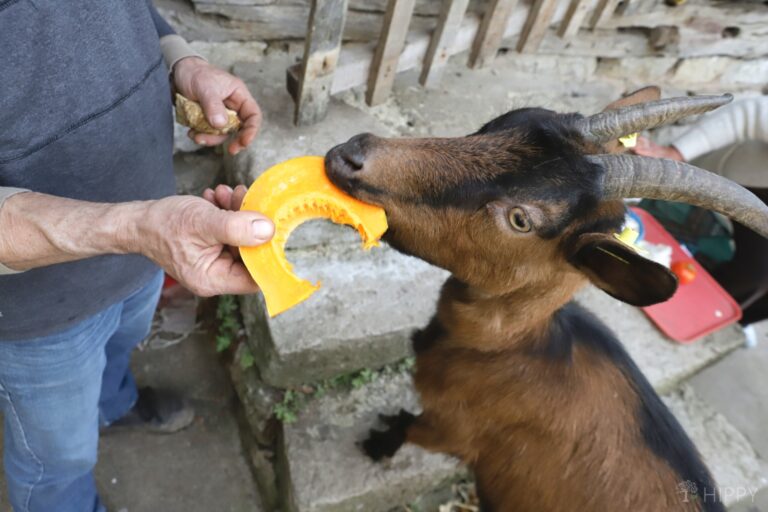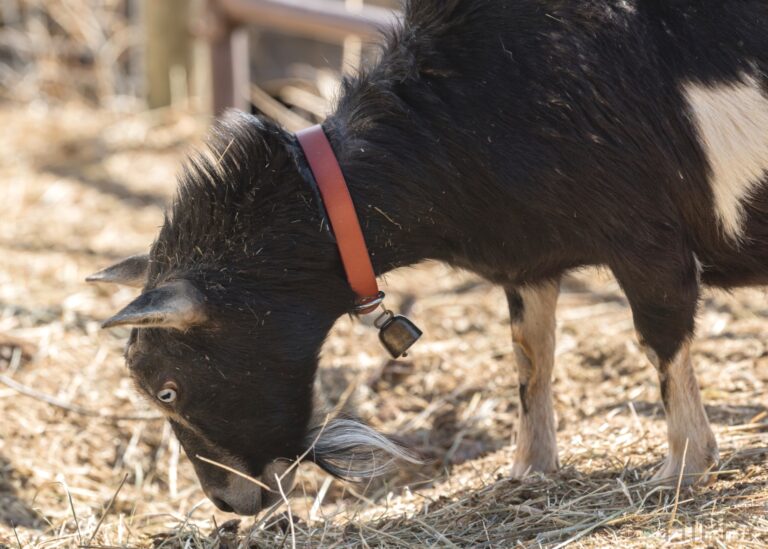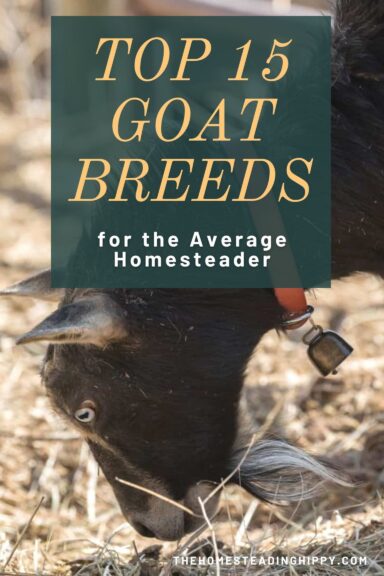One of the coolest things about goats is also one of the most intimidating: there are so many different goat breeds out there! It can feel like the pressure is on to make the best, most insightful, and most informed decision if you want to enjoy your time taking care of them.
And to tell the truth, that’s pretty much correct! You need to choose your breed intelligently based on your objectives, your environment, and even your experience level.
If you want meat, milk, or both, your goats should serve that purpose! And at the same time, you must be able to handle them and, hopefully, get along with them.
But you don’t need to worry, even if you don’t know a thing about goats: I’m here to help with this guide on the best goat breeds for homesteaders. Keep reading and learn about the best types of goats for your homestead right here.
Goat Breeds for Meat
If meat is what you are after, these goats will deliver, as they possess better than average feed-to-gain ratios, high carcass yields, or just produce particularly flavorful, tender meat.
Spanish
Known for a long lifespan and succulent, tender, perfectly marbled meat, the Spanish goat is the meat breed for connoisseurs. They also have a lot to recommend them for homesteaders: they tend to be resistant to bad weather and are excellent foragers, meaning they will need less care, food, and interaction from you regardless of the condition of your property.
These are significantly smaller than some of the other meat breeds on our list, with does typically topping out between 125 and 135 pounds, but bucks can be pretty sizeable, weighing a little more than 200 pounds in the case of large individuals.
However, they are known to be absolutely masterful escape artists and are surprisingly athletic, meaning your enclosure must be specially built, sturdy, and tall to stand a chance of keeping them in.
Fainting Goat
Famous the world over thanks to a non-stop stream of hilarious videos on the internet, the fainting goat, more properly known as the Tennessee goat or the myotonic goat, possesses a genetically inherited neuromuscular defect that causes their muscles to lock out, stiff and straight, if they are startled or frightened.
This, naturally, causes them to topple over- though they don’t really faint as the name suggests.
This humorous quirk aside, these goats are notable for being remarkably dense and muscular for their size, meaning that for homesteaders looking for a haul of meat, the yield will be disproportionate to their relatively small stature.
Even better, fainting goats are prolific breeders, able to both breed year-round and routinely give birth to two or three kids in a litter.
Large yield and prolific reproduction mean you’ll never run out of meat with fainting goats.
Rangeland
One of the single most popular meat breeds in the world, and overwhelmingly the choice of Australia, the Rangeland is a stocky, broad, short-haired goat that is kept almost exclusively for meat.
It accounts for more than 88% of goat meat production in Australia and nearby countries because of its advantageous characteristics.
Although very small, rarely weighing more than 110 pounds, they show excellent feed-to-gain rates, overall excellent health, and are remarkably easy to handle though they can be standoffish and wary if you didn’t raise them yourself.
You might have to butcher more carcasses to make up the difference because of their small size, but their meat is also said to be of excellent quality and they reproduce extremely quickly.
If you have trouble handling larger breeds, the Rangeland is definitely an inspired choice.
Boer
The Boer goat is one of the most important in the world concerning the commercial production of goat meat, and one of the most popular in the United States.
They grow extremely quickly and are known for hardiness, self-sufficiency, and good overall health; these are excellent producers if you just want meat. And with males topping out at a whopping 325+ pounds, the yield is exceptional!
Another great characteristic is that they are excellent breeders, with does kid readily and easily, and show excellent motherly instincts. This means it is easy to expand your herd naturally if you want to.
Despite all of this, they also tend to be calm, gentle, and easy to handle, but you should take care if you are keeping them in a human environment because they are susceptible to certain parasites.
Kiko
Kiko goats are much like Boers when it comes to self-sufficiency, hardiness, and independence. They are excellent grazers and show good conversion rates even when left on pastures with suboptimal forage.
Though a new arrival on US shores, only being in the country since the early 1990s, they are quickly gaining a dedicated following for meat production.
Not quite as massive as Boers, they’re still very sizeable, with adult males tipping the scales at about 300 pounds or slightly more. This means that carcass yields are uniformly good.
There’s a lot to like about them concerning their productivity and health, but they tend to be exceptionally willful and difficult to handle for newbies, even though they are rarely truly mean.
Goat Breeds for Milk
Goats have been kept for milk for ages now. If you’re just getting started with goats, consider getting any of the milkers below and you can be sure of success.

Alpines
A legendary dairy breed, no pun intended, the Alpine goat originates from France, specifically the French Alps as the name suggests.
Though not quite as productive as the Saanen featured elsewhere in this section on dairy goats, you’ll love how rich and creamy their milk is; that’s because it has significantly higher fat content.
Like most other dairy goats, they tend to be relatively laid back, gentle, and friendly meaning you’ll find them easy to handle. They also withstand cold extremely well owing to their ancestral home range.
However, this extra-rich milk comes at a cost: they need more food than other goats in their weight category in order to sustain production.
Toggenburg
Toggenburgs are one of the oldest types of goats developed and kept specifically for dairy use in the world.
Many hundreds of years old, these goats hail from the Toggenburg Valley in Switzerland and are notable for their iconic good looks consisting of contrasting black or dark brown and white stripes on their faces.
Although only moderately productive compared to the other dairy breeds on our list, they are very consistent producers and are known to produce milk straight through the winter if kidding is timed correctly. Their milk, though relatively low in fat, is notably sweet, making it a favorite among goat milk fans.
Even better, these goats are famously gentle and easy to get along with, and considering that they don’t grow too large they are even easy for novices to handle.
Oberhasli
Another Swiss breed, and one that is renowned for its sturdiness and athleticism, they are one of the most photogenic goats on our list with an iconic and highly distinctive short, camel-colored coat that is set off by black accents on the legs, chin, and head.
Another medium-sized milker topping out at about 150 pounds, they’re not the most productive dairy goat on our list since they only yield about a gallon or a little more daily under ideal conditions.
Still, their milk is pretty rich, averaging about 3.8% butterfat content. They’re also resilient and adaptable, meaning they can thrive almost anywhere.
However, this is another breed that is absolutely notorious for escaping confinement, so you must be ready for that. They also tend to be quite a bit noisier than other goats, so they may not be the best choice if you have the goat pen close to your home.
Saanens
Saanens deserve a spot at the very top of the milk goat hierarchy because they are the most productive breed around. If you need a couple of gallons of milk a day, a young Saanen doe can provide.
Now, while delicious, their milk is not particularly remarkable because it is relatively low in fat content and often said to be “thin” and lacking in creaminess.
This is another hefty breed, with females weighing anywhere from 135 to 145 pounds, though bucks are not much bigger at around 175 pounds. Nonetheless, they have a reputation for being very sweet-natured and easy to handle, which is definitely a benefit when you’re trying to get them on the milking stand.
Also, fun fact, there is a miniature variety that is significantly smaller and also known to produce richer milk if you want to go that route.
La Mancha
An instantly recognizable breed thanks to their tiny, cropped-looking “gopher” ears, La Manchas are highly productive, playful, and active, making them sure favorites of folks who want to interact and play with their herd.
Aside from the cheery attitude, they tend to be quite healthy and resistant to parasites and many other kinds of common infections. And, most importantly of all as far as I’m concerned, they tend to be quiet!
You can expect to get about a gallon of milk from them a day under ideal conditions, though this milk is pretty low in overall fat content.
All in all, they’re easy to take care of, but you will have to stay on top of keeping their ears clean since they don’t have cartilage that actually covers their ear canals.
Dual-Purpose Goat Breeds
You don’t have to choose between milk or meat if you pick the right breed. The following goats are classified as dual-purpose, meaning they are reasonably capable of milk and meat production alike.

Nigerian Dwarf
A tiny goat, and another petite breed that is a surprisingly able milker and also good for meat. Rare in the United States, more and more homesteaders are coming around to the idea of Nigerian Dwarfs as an efficient breed that can maximize smaller plots of land.
They also make wonderful pets and are very playful, though they don’t play too rough, meaning they’re a great choice for families with small children.
Rarely weighing more than 75 pounds, they are quite productive for their weight, with does producing about a half-gallon of milk daily and having a long lactation period of about 305 days. Their milk is also remarkably fatty, averaging anywhere from 6% to 10% butterfat.
Black Bengal
Originating in Bangladesh, as the name suggests, these goats are renowned for the exquisite quality of their meat: it is perfectly marbled, tender, and extraordinary in every way, and this has led some folks to call them the “Angus of Goat Meat”!
But, as a true dual-use breed, they are also able producers of milk, though not particularly productive. For smaller-scale operations, families, and other less intensive purposes, though, they still do just fine.
This is another highly fertile breed that readily kids, and mothers have excellent instincts. Twins are the rule, and triplets are fairly common! You won’t struggle to expand your herd with Black Bengals, that’s a fact.
Pygmy
These pint-sized goats make perfect pets, but don’t let their diminutive stature fool you: they are good producers of both meat and milk!
Although the carcass yield of meat is pretty meager, as you’d expect, it’s still more than enough to keep the freezers of a family and neighbors filled. Even better, pygmy goat milk is known to be incredibly, unbelievably rich, containing a maximum of 11% butterfat!
This breed is also particularly eager to eat weeds, so a larger herd of them can be used for land-clearing purposes. They are a charming multipurpose breed if there ever was one!
Nubians
One of the best all-around goats you can own, Nubians are one of the most heat-tolerant breeds around, highly prolific breeders, excellent mothers, and all-around very healthy.
They are able producers of meat, although not especially noteworthy in terms of quality or yield, but they produce very rich milk at a rate of about a gallon per day. Their milk is delicious as is, and ideal for making ice cream and other products.
Lots to love, right? Yes, but this is yet another breed on our list that is known to escape captivity at the drop of a hat, even from the most seemingly secure enclosures.
They’re also extremely loud and highly vocal, meaning you’ll be listening to their noise around the clock. That can definitely test your patience, but if you’re willing to put up with a little bit of angst out of them, you’ll find that they are wonderful producers.
Kinder
An inspired choice if you want a true dual-purpose goat, Kinders were created by crossbreeding Pygmies and Nubians, both featured elsewhere on our list.
Accordingly, they are wonderful producers of both meat and milk, with their milk being notably creamy thanks to a high percentage of butterfat. Kinder milk is especially coveted for making soap and other products.
But they’re no slouches when it comes to meat, either, thanks to an excellent carcass yield: they grow quickly and put on considerable weight from relatively little feed, meaning they are always an efficient choice.

Tim is a farm boy with vast experience on homesteads, and with survival and prepping. He lives a self-reliant lifestyle along with his aging mother in a quiet and very conservative little town in Ohio. He teaches folks about security, prepping and self-sufficiency not just through his witty writing, but also in person.
Find out more about Tim and the rest of the crew here.
